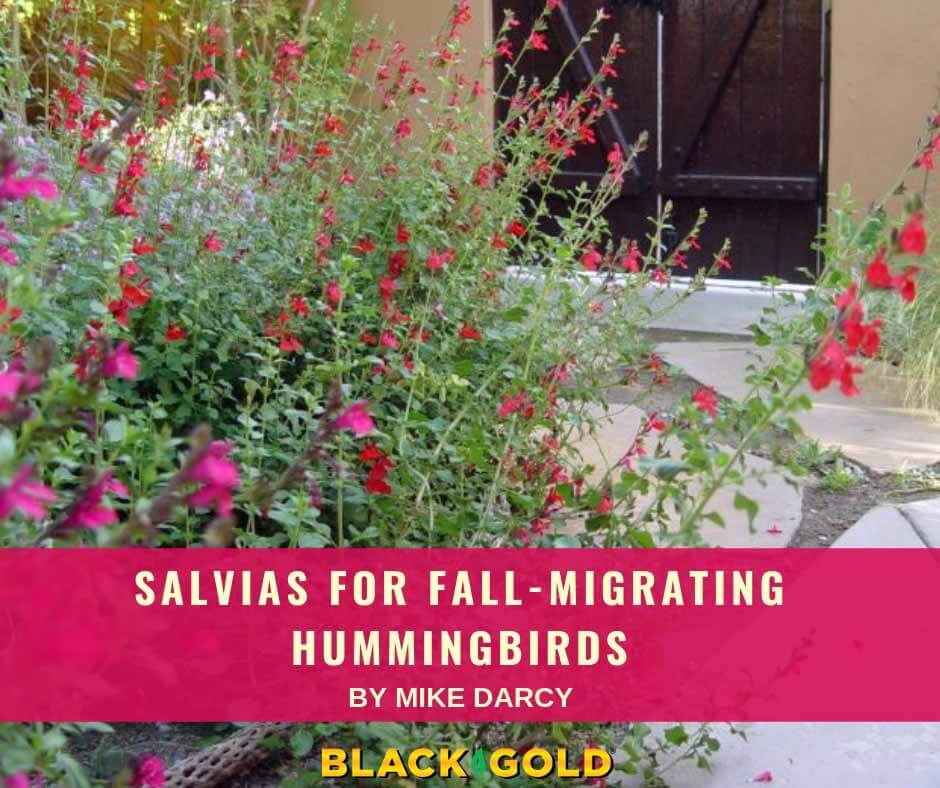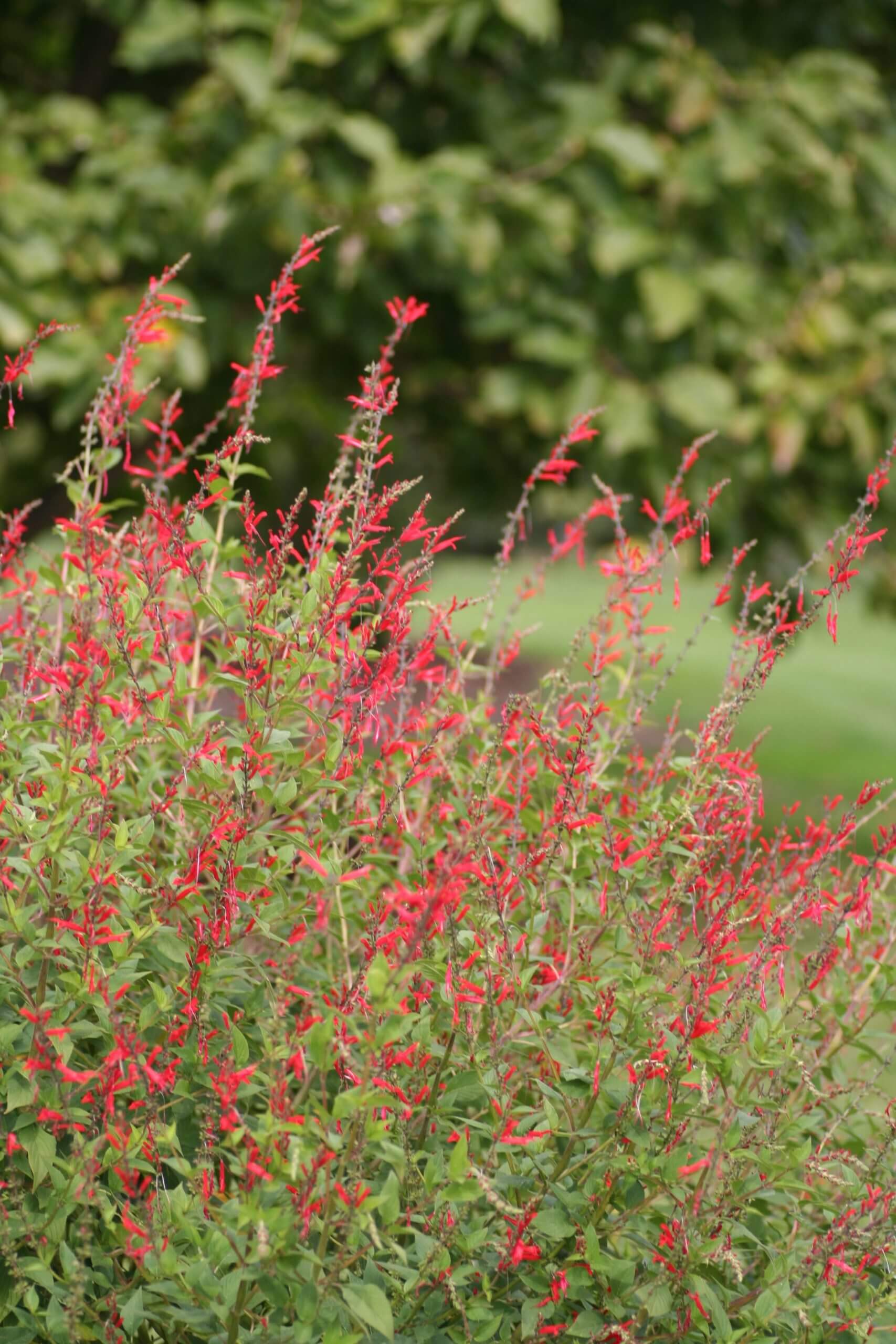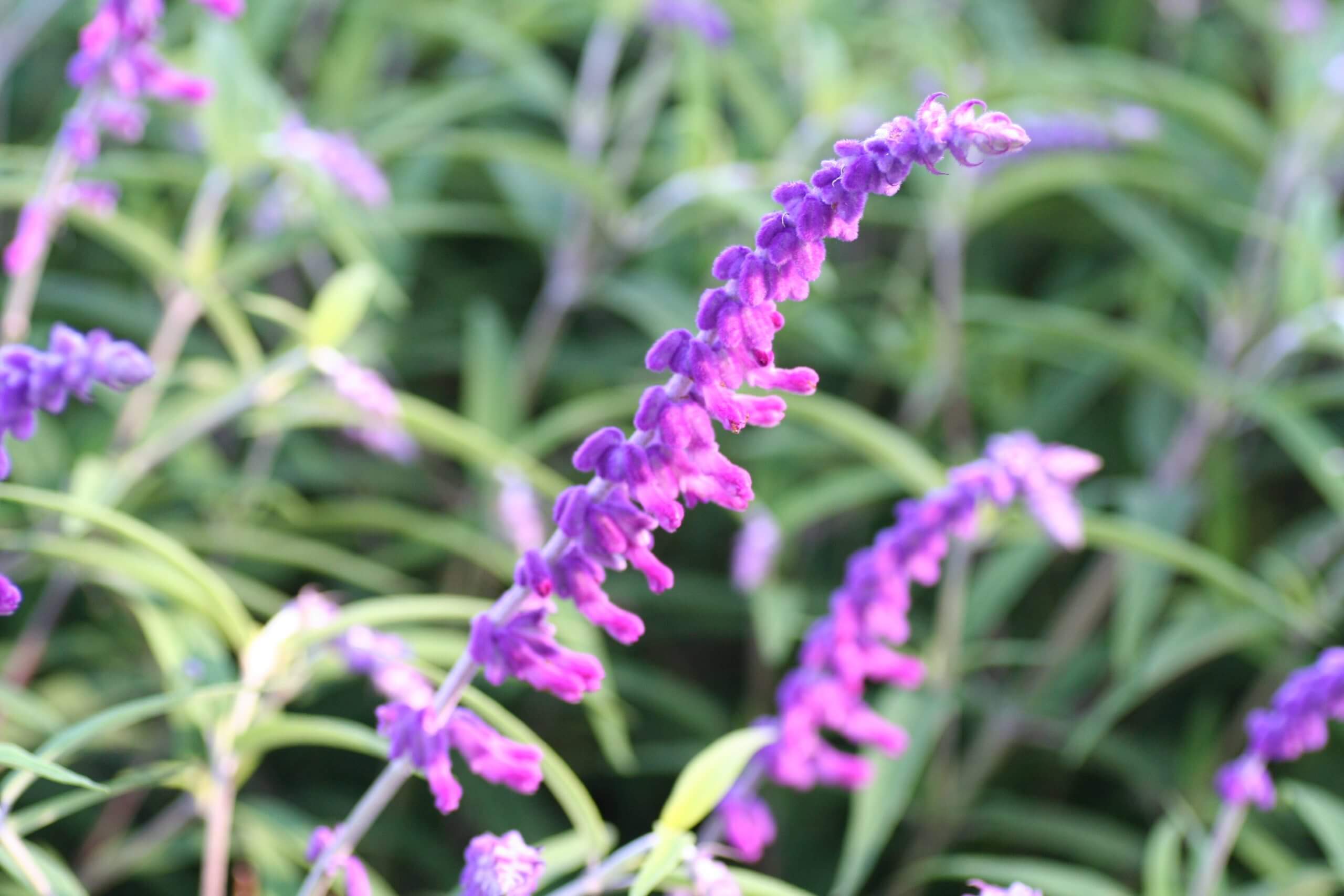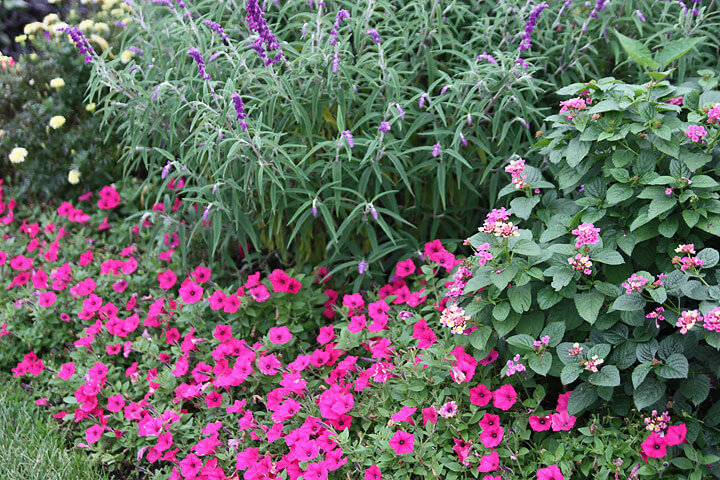
Hummingbirds rely on the nectar of many fall-blooming salvias to assist in their late-season migration. The striking beauty, bright colors, and architectural statures of these plants also make them great for the garden. Most cultivated salvias are from Mexico and the Southwest United States, which is why pollinators migrating south are attracted to them. Their relationship is mutually beneficial; the flowers feed the birds and the birds pollinate the flowers.
Fall Salvias
Nonstop flowers of red, pink, or white appear on Salvia coccinea (Texas sage, 1-3′ tall, zones 8-10) starting in midsummer. These will continue well into frost and draw lots of hummingbirds. Deadheading old flower stalks will keep plants looking clean and attractive.

The Brazilian red velvet sage (Salvia confertiflora, 4-6′ tall, zones 9-11) blooms with delicate spikes of tiny velvety red flowers. It is also bushy and large, reaching 4 to 5’ in height. Though its flowers feed tropical hummingbirds, they are also perfect for migrating North American species. They bloom from midsummer to season’s end. Just be sure give this plant lots of space.
Pineapple sage (Salvia elegans, 3-4′ tall, zones 8-10) is an enormous, bushy sage best known for its aromatic leaves that smell of sweet pineapple. Its scarlet fall flowers make a spectacular show starting in early fall. The popular cultivar ‘Golden Delicious’ boasts outstanding golden leaf color all season long.
Autumn sage (Salvia greggii, 1-3′ tall, zones 6-9) blooms for much of the season but offers a strong fall flush of red, orange-red, white, pink, and purple flowers. Native to South Texas and Mexico, it is an essential wildflower for migrating hummingbirds. In its native form, it also looks nice in the garden. Cut late-summer stems back to keep this open but bushy perennial looking great.

Height and elegance make Salvia leucantha (Mexican bush sage, 2-3′ tall, zones 8-10) one of the most outstanding fall salvias for large spaces. Streamers of soft, velvety flowers in shades of pink, purple, magenta, and white emerge on stems lined with silvery leaves in late summer and continue through fall. When not in bloom, its leaves still add visual flair.
Unique primrose-yellow flower color and long floral stems make forsythia sage (Salvia madrensis, 6-8’ tall, zones 7-11) a true architectural gem for the fall border. The enormous plant requires lots of room but looks great when well-placed in the landscape. Blooming starts in mid-fall and continues up until frost.
Growing Fall Salvias
All of these salvias are sun-loving and can take the heat, though they really shine in the cool of autumn. Plant them in spring for full effect, but also keep an eye out for large potted specimens to fit into late-summer beds. Before planting, amend the ground with Black Gold Garden Soil. Its mix of peat moss and compost makes for rich soil to support good growth.
Most of these salvias are tender, meaning they should be grown as annuals, but some are perennial where winters are mild. Fall-migrating hummingbirds and other pollinators will thank you for planting these gorgeous fall flowers, and your gardens will be none worse for the wear.


